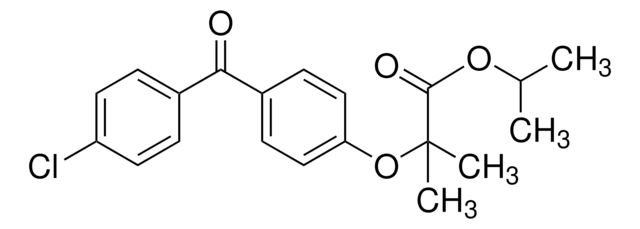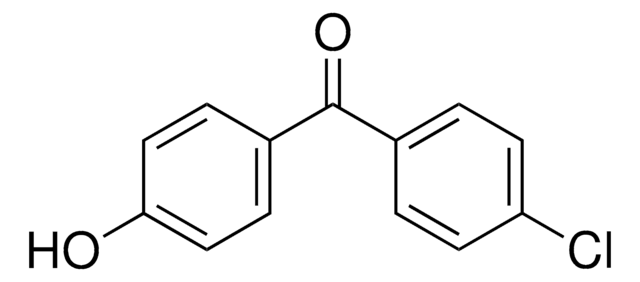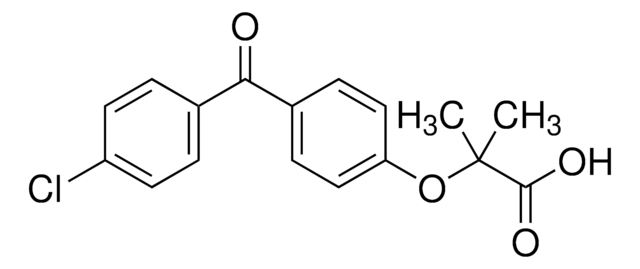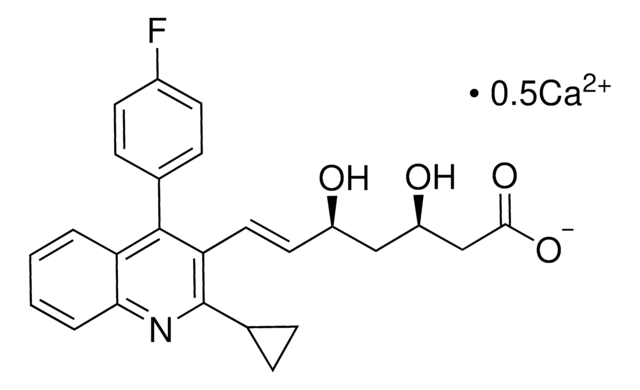F0048000
Fenofibrate
European Pharmacopoeia (EP) Reference Standard
Sinonimo/i:
2-[4-(4-Chlorobenzoyl)phenoxy]-2-methylpropanoic acid isopropyl ester
About This Item
Prodotti consigliati
Grado
pharmaceutical primary standard
Produttore/marchio commerciale
EDQM
tecniche
HPLC: suitable
gas chromatography (GC): suitable
applicazioni
pharmaceutical
Formato
neat
Stringa SMILE
CC(C)OC(=O)C(C)(C)Oc1ccc(cc1)C(=O)c2ccc(Cl)cc2
InChI
1S/C20H21ClO4/c1-13(2)24-19(23)20(3,4)25-17-11-7-15(8-12-17)18(22)14-5-9-16(21)10-6-14/h5-13H,1-4H3
YMTINGFKWWXKFG-UHFFFAOYSA-N
Informazioni sul gene
human ... PPARA(5465)
Cerchi prodotti simili? Visita Guida al confronto tra prodotti
Descrizione generale
Confezionamento
Altre note
Prodotti correlati
Avvertenze
Warning
Indicazioni di pericolo
Consigli di prudenza
Classi di pericolo
STOT RE 2 Oral
Organi bersaglio
Liver
Codice della classe di stoccaggio
11 - Combustible Solids
Classe di pericolosità dell'acqua (WGK)
WGK 1
Punto d’infiammabilità (°F)
Not applicable
Punto d’infiammabilità (°C)
Not applicable
Scegli una delle versioni più recenti:
Certificati d'analisi (COA)
It looks like we've run into a problem, but you can still download Certificates of Analysis from our Documenti section.
Se ti serve aiuto, non esitare a contattarci Servizio Clienti
Possiedi già questo prodotto?
I documenti relativi ai prodotti acquistati recentemente sono disponibili nell’Archivio dei documenti.
Il team dei nostri ricercatori vanta grande esperienza in tutte le aree della ricerca quali Life Science, scienza dei materiali, sintesi chimica, cromatografia, discipline analitiche, ecc..
Contatta l'Assistenza Tecnica.






